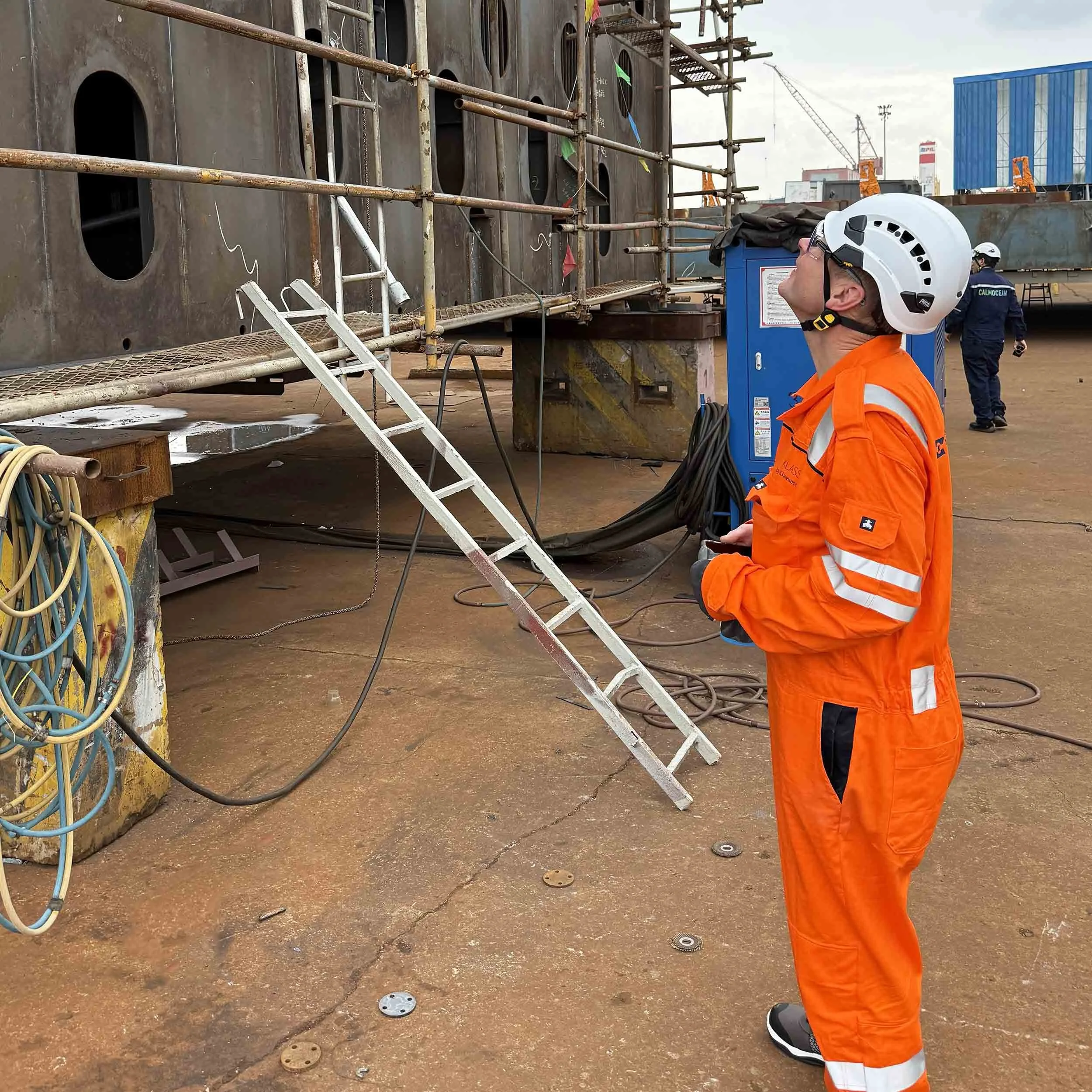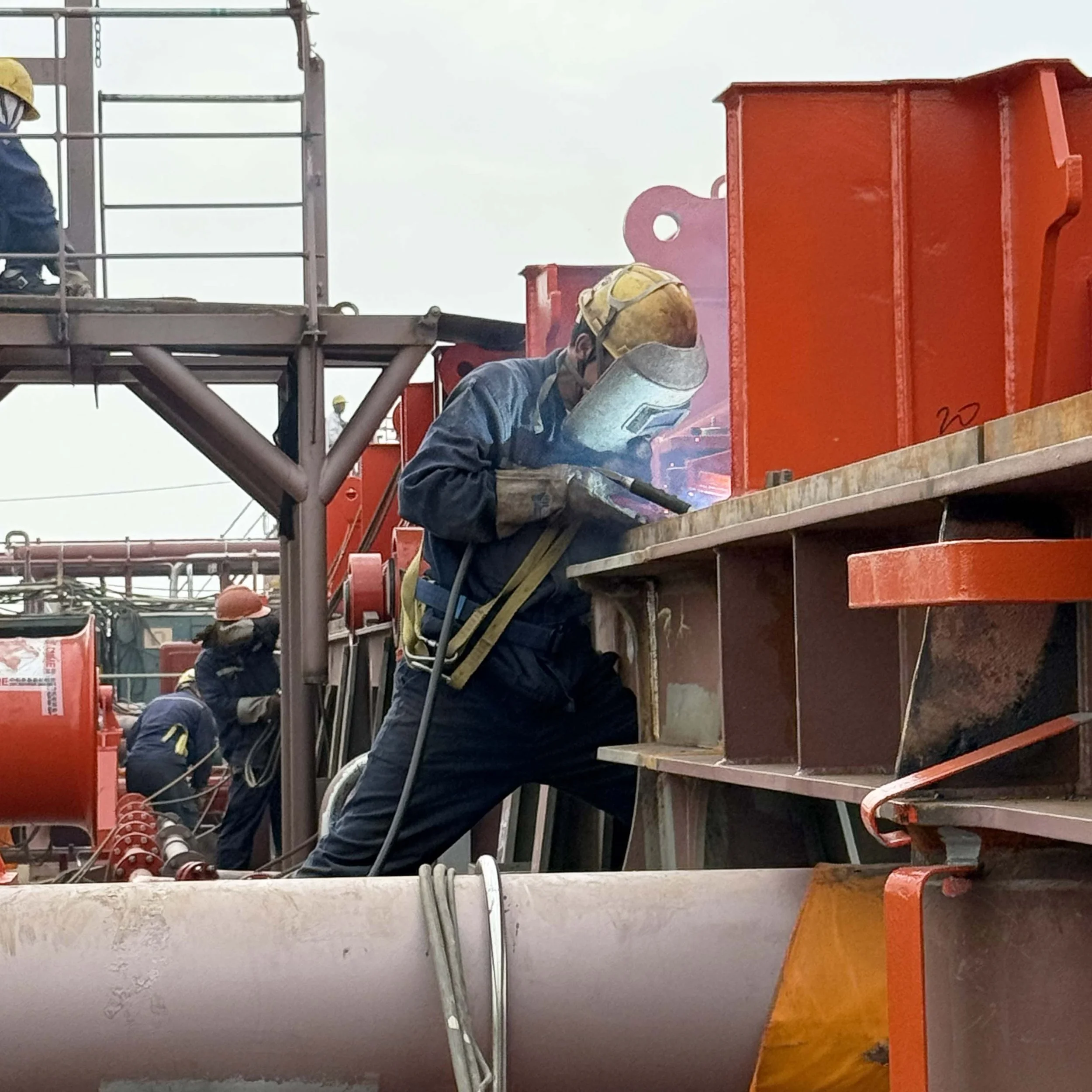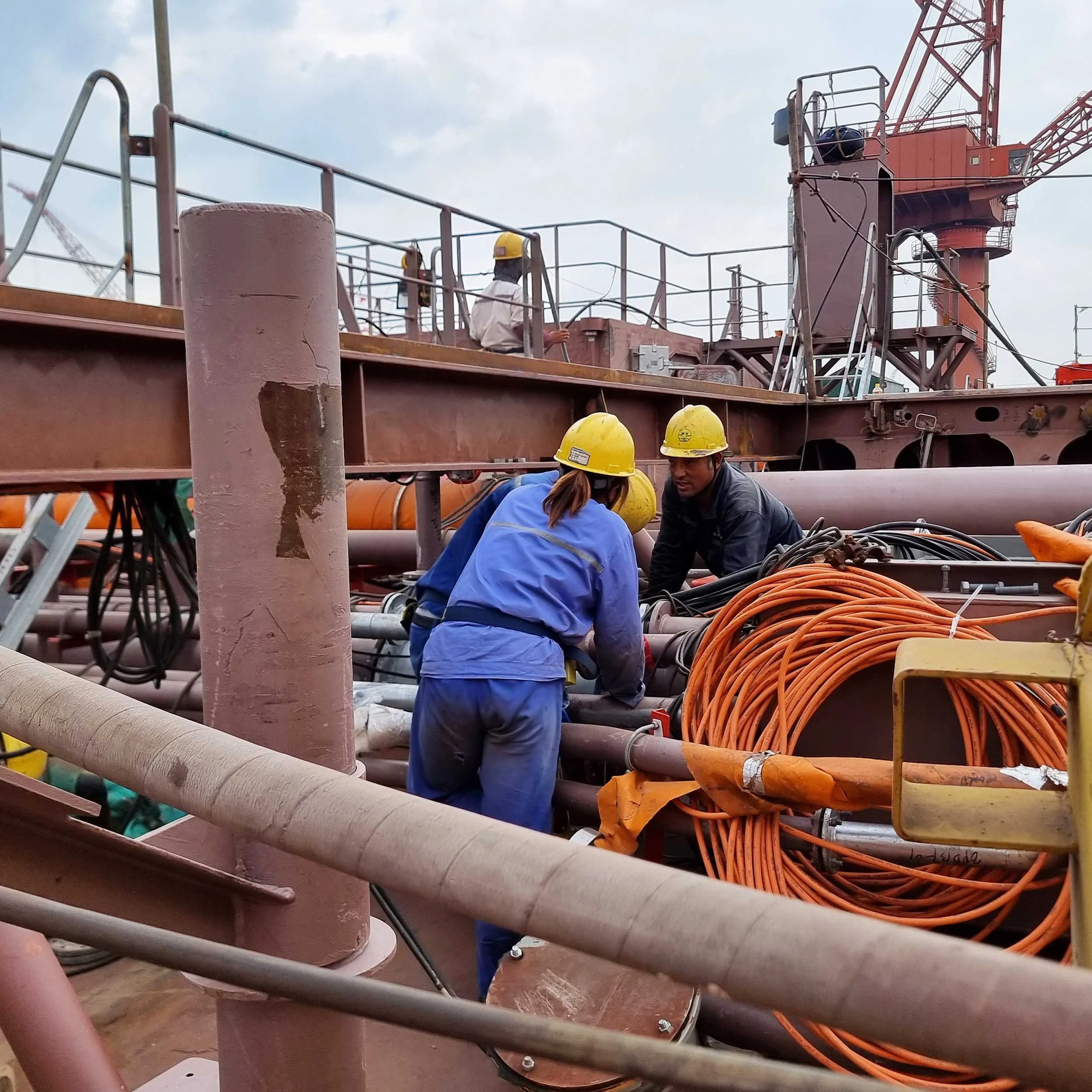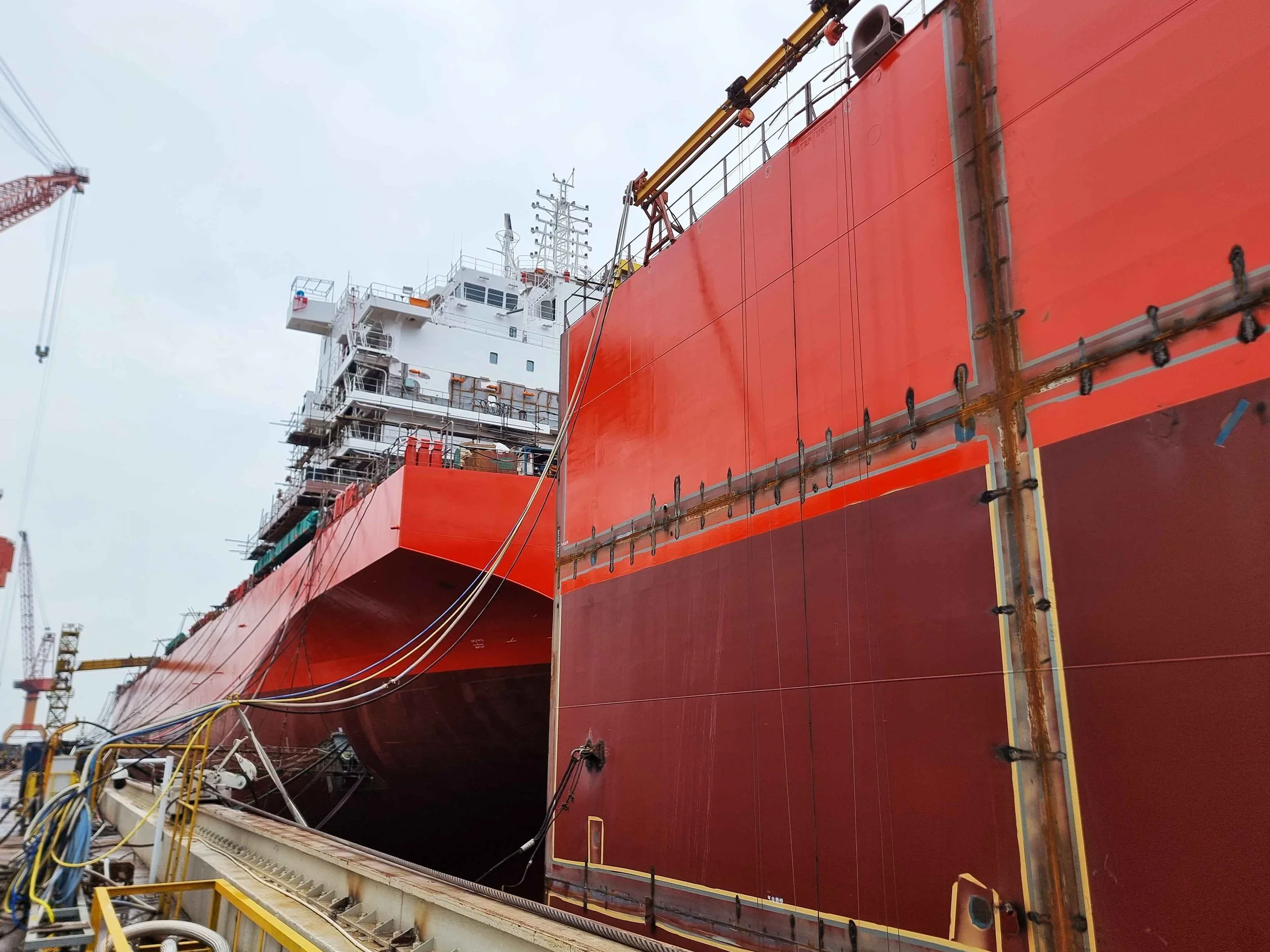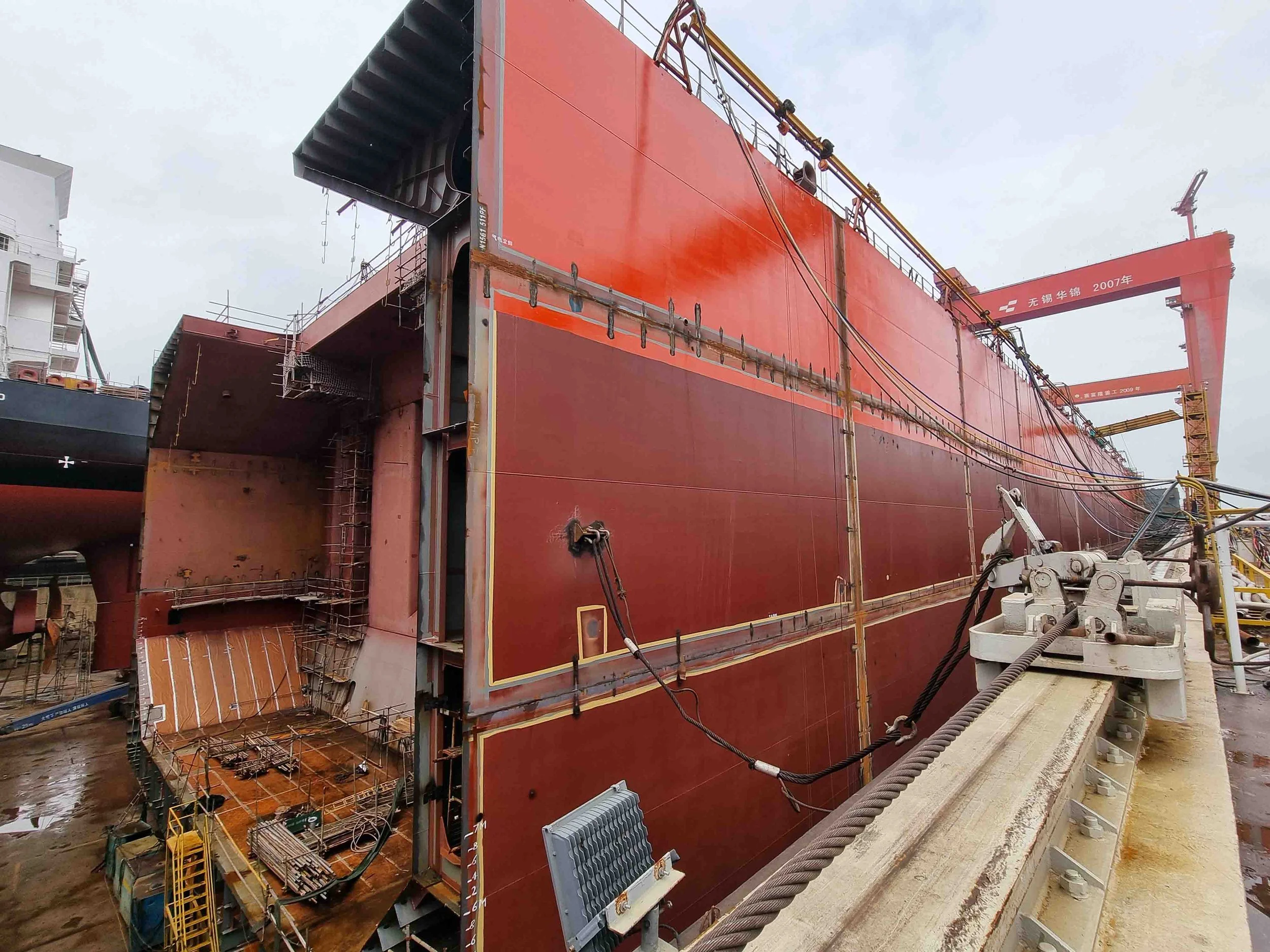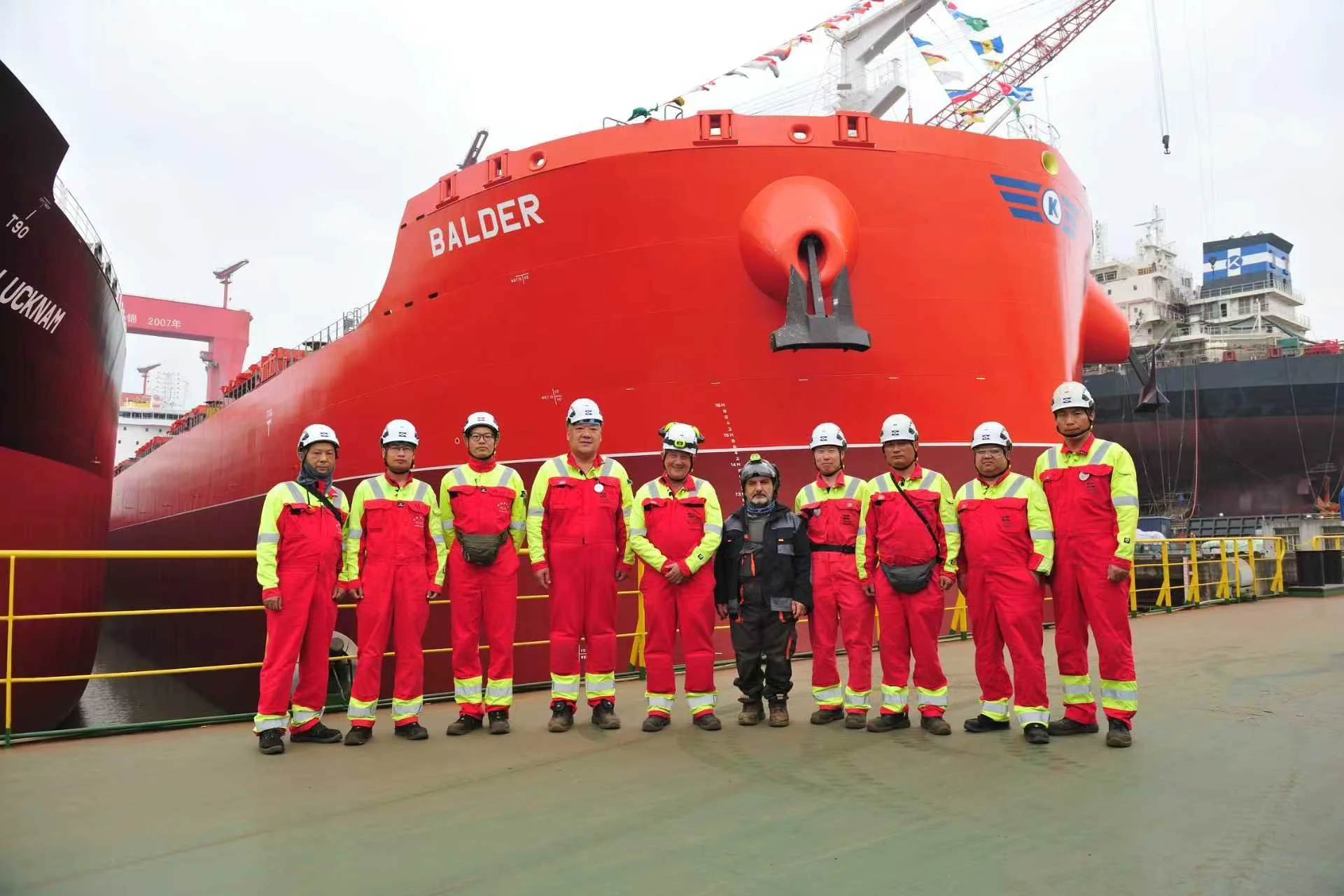At the yard: bringing the CABU III to life
Image: Leif Harsem (Site Manager, KCC) and Ingri Langemyhr (Head of Financial and ESG Reporting, KCC)
On 30 September 2025, MV Balder our first CABU III newbuild was successfully launched from dry dock at New Yangzi Shipbuilding Co., Ltd. In the days leading up to the milestone, our team was on site to witness key phases of the construction process — and to take a closer look at the activity, precision, and craftsmanship that goes into bringing our CABU III’s to life.
Steel and structure
Only about 1-2% of China’s total steel consumption goes into shipbuilding. It may be a small share, but one that demands the highest quality to perform at sea. Each CABU III will use approximately 14 000 tons of this high-grade steel, cut and shaped into hundreds of prefabricated sections (or ‘blocks’). The blocks form the large steel sections of the hull and superstructure and are built separately before being joined together in the dock.
Images: Start of the process with uncut steel plates
Block assembly and inspection
Our 12-person KCC site team oversees quality on every major milestone on a daily basis. On busy days, they perform more than 150 quality approval checks covering welds, coatings, pipe routing, and structural alignment to ensure every section meets company standards and are in line with design schematics.
Images: Jarle Kverneggen, Head of HSEQ, Klaveness Ship Management AS (OSM Thome) with on-site manager Bruce li Zhihua, Mechanical Inspector KCC site team, completing checking and approvals.
Workforce on deck
At any given time, more than 200 workers are onboard each vessel: from welding, installing systems, painting, fitting electrical cables, performing inspections, and more. This requires careful coordination and of course strict adherence to safety protocols every step of the way.
Images: Yard workers in action on different parts of the vessel
A shared dock milestone
For each vessel, the entire process from steel cutting to launch takes around 12-15 months. Until the launch of MV Balder on 30 September 2025, two of our new CABU III vessels sat side-by-side, with one at full length and the other at ¾ length, in the same dry dock. They stretched approximately 400 meters from bow to stern.
Images: MV Balder (left) and MV Bastion (right) alongside one other in the dry dock.
People and pride
Beyond the machinery and cranes, the visit reinforced the pride and craftsmanship behind each step of the build. From ship to shore, each newbuild requires around 2.5 million hours of workforce hours and each team member involved plays a vital role.
Images: Yard workers gather ready for lunch (left) and compliance training taking place with site team (right)
Setting sail
The launching of MV Balder marked the next major milestone in our CABU III newbuilding program and we look forward to taking delivery of the vessel as scheduled in Q1 2026. Next off the production line is MV Bastion with delivery expected in Q2 2026, with MV Baltazar (our first vessel to carry windsail technology) expected in Q3 2026.
Images: Launching of MV Balder from the dock on 30th September 2025
Shipbuilding fact box:
As of mid-2025, Chinese shipyards’ order backlog accounted for about 65% of the global total, far ahead of South Korea and Japan.
China is forecast to produce around 51 million DWT in new vessels in 2025, roughly half of the global output.
Yangzijiang Shipbuilding Group has an annual shipbuilding capacity of over 8 million DWT, employing some 30 000 employees.
KCC’s newbuilds are being built at the Group’s subsidiary New Yangzi Shipbuilding Co., Ltd., which has an annual production capacity of around 3 million DWT.
The yard spans more than 2 million square meters along the Yangtze River, with a total wharf length of 3 000 m.




